#Equus caballus
Explore tagged Tumblr posts
Text

working on early horses, i wanted to do a quick sketch to show how small Eohippus was compared to an extant horse (this one is about 150cm tall). as you can see, it wasn't big at all. a perfect little lap horse :)
#i honestly don't even know how i managed to get this one done#was working on it veeeeery slowly#even tho it isn't even insanely rendered#was kinda hard to finish cuz i'm exhausted but i wanna continue working on early horses... hmm.. series? idk#i might do a size chart with them in the future if i draw enough of them<3#barghestland#art#artists on tumblr#paleoart#horse#equus caballus#eohippus#id in alt
6K notes
·
View notes
Video
Wild Horse Foal by Georgie Alexon Via Flickr: Foal wild horse - Taken near Sundre, Alberta Canada -Equus caballus
#Equus caballus#wildlife#horses#wild horses#Alberta#animals#Canada#Nature#outdoors#summer#Canon#photography#baby animals#colt#flickr
87 notes
·
View notes
Text
My final for scientific illustration ✨💀✨
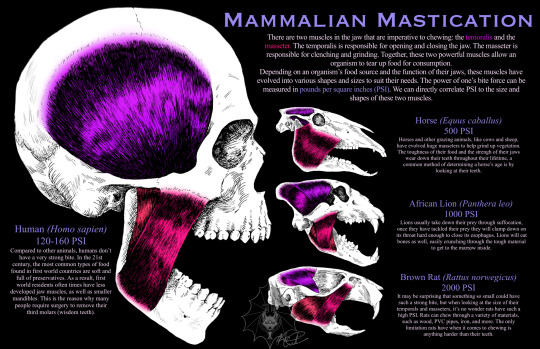
#art#traditional art#drawing#traditional drawing#ink drawing#scratchboard#anatomy#anatomical illustration#anatomical art#illustration#scientific illustration#educational poster#biology#skull#skulls#human skull#human anatomy#horse#horse skull#equus caballus#horse anatomy#lion#panthera leo#rat#brown rat#rat skull#rattus norwegicus#strigoium’s college art
164 notes
·
View notes
Note
A horse

A Horse
#art requests#little guys#request#art#horse#clydesdale#equus caballus#i love the lineart in this one
16 notes
·
View notes
Note
Ok so thanks for the answer vis a vis the centaur situation I appreciate it a lot and I'm not trying to convince you to change your ruling but unfortunately you used the word taxonomy which triggered one of my damn neurodivergences. I hope you don't mind but my response will be to deposite these few paragraphs in your inbox I'm sorry in advance if this comes off as aggressive or condescending or just plain annoying I'm just sensing an opportunity to infodump to someone who might be interested in tbe topic so I'm seizing it I'm sure you know what it's like
Anyway there's a disconnect between pragmatism and scientific rigor that people are blind to which vexes me and biological taxonomy is a particular pet peeve of mine the biggest instance of it is crocodiles and alligators which are really the same damn animal for all intents and purposes but that's not relevant
Naturally when one thinks of horses one thinks of domestic horses specifically (Equus ferus cabellus) but I'd argue that certain pictures of donkeys (Equus africanus) look more like domestic horse pictures than certain pictures of Przewalski's horse (Equus ferus przewlaskii) despite the latter being classified as the same species and the former not
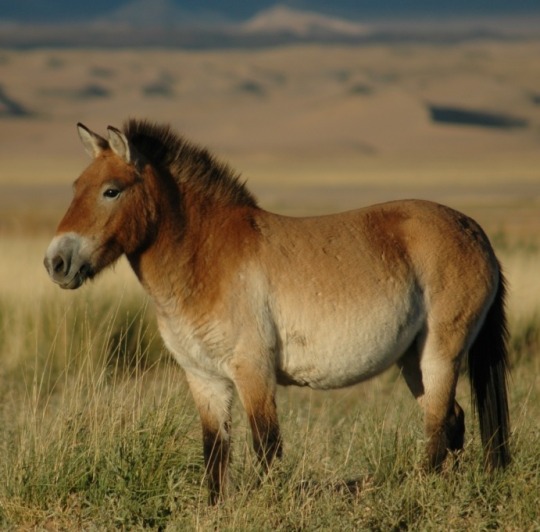
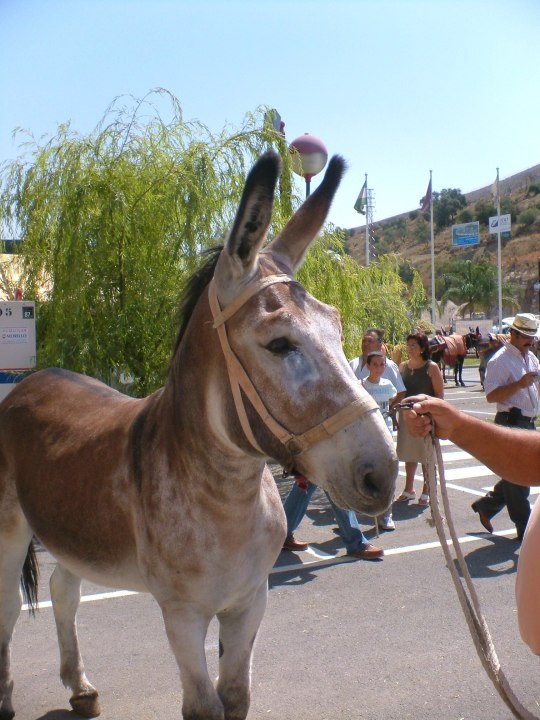
And I feel that for a horse image barn the resemblence of a picture to an archetypical horse image should be a higher priority criterion for inclusion than some criteria that biological taxonomy relies on like the presence of specific haplotypes which isn't even a word anyone knows and if you go to its Wikipedia article you get a definition of it that's not really relevant to this ask
So yeah in conclusion I wouldn't tie the in/ex-clusion of images to scientific taxonomy but to Vibes if I were the admin of this or a similar blog but I'm not and you are so you can like do whatever
Also I won't be submitting the centaur image I wanted to submit but can I still send it as an ask I like showing it to people spreading it around etc it's kind of cursed but also funny and I like it a lot and I understand why it's not horse enough to your taste but it's definitely horse adjacent and I want to share it
as a fellow animal wikipedia delver i agree that taxonomy is not the end all be all of the human perception of animals however what i meant to imply is that the differences between centaurs and horses are large enough to be considered taxonomical and are not debatable even in a taxonomical sense due to their many massive differences also i have posted przewalskis horses before as they are true horses and this is horseimagebarn not assimagebarn or centaurimagebarn even though i love donkeys just as much and would own a donkey over a horse any day
i did just take my adderall and am bored at work so i have to humbly yet lengthily disagree with you that taxonomy is not important in both cases presented while the crocodilian assumption you make has bruised my heart as i love alligators and i find them far cuter than crocodiles due to the differences in their jaw structure that makes their bottom teeth fit into their mouth instead of jutting out like crocodiles (which is one of the many actual and notable physical differences between them alongside choice of salt or fresh water etc) i wont get into that and will focus on horses since thats the point of this blog using actual punctuation and capitalization for the first time in this blogs history ill be referring to przewalskis horse as takhi as it is also known so i dont make a typo which i know i will
long ass (donkey pun) post warning
Taxonomy can of course be vague at times or muddied, but it is not an invalid study. All human knowledge is constantly evolving, and mistakes are inevitably going to be made, but that does not make our efforts invalid. It is beneficial for us to know how evolution works. Taxonomical differences are real and worth considering, even if mistakes are made sometimes. Two animals looking similar is not a valid reason to ignore their taxonomical differences, nor is it okay to ignore similarities because they look different—if we went by that logic, every dog breed would be a totally different species.
Speaking of, here's a little more on the whole appearance thing before we get into the science:
The other day, I was watching a video about the actual horses that existed in antiquity, and they are far more similar to takhi than you might think. I'll link the video if I can find it, apologies for a lack of a source on this right now, but the gist of it was that horses of yore were much shorter and stouter than modern horses. The tall, thin horse often seen in modern depictions of ancient time is inaccurate, as is the thick, muscular draft, which didn't become common until later on. Back then, people wanted horses that were sturdy—most people didn't care as much about specific breeds or having the hugest and prettiest horse on the block, especially when food to maintain larger animals like modern horses wasn't always guaranteed, and having such a huge animal could be dangerous and more difficult. Their horses were more similar to ponies than our big guys now, and ponies aren't a separate species. The selective breeding of horses to become taller and leaner made them appear way different from the takhi, but just like dogs, they remain extremely similar to those of their taxa despite looking different on the surface. For example, take a look at the ancient fjord horse breed next to the takhi...in fact, sometimes takhis are called Mongolian ponies! We can even see this in ancient art earlier in the horse's domestication:


Anyway, science:
Firstly, the takhi isn't wholly classified as the same exact species as the true horse, our domesticated Equus ferus caballus. Both Equus ferus callabus and Equus ferus przewalskii are considered subspecies of caballines, or true horses, meaning they're more like cousins (I know it's a cliche to say this, but I mean it), with donkeys and zebras as, like, their nephews twice removed. If the takhi was considered the exact same species as the domestic horse with no acknowledged differences, it would be considered a breed of horse, not a subspecies (though breeds are typically manmade, they are not always—see the word "typical" in the dictionary definition). This means that it does have recognized, distinct differences from the standard domesticated horse that have been taken into consideration in their taxonomy—it is not like the two are blindly considered the same exact thing.
Mistakes have been made in Equus taxonomy in the past, but continued research has led to a retaxing of the genus as early as the 1980s. In the 2012 review article "Discordances between morphological systematics and molecular taxonomy in the stem line of equids: A review of the case of taxonomy of genus Equus," by E. Kefena et al., a number of scholars reviewed the methods with which the Equus genus has been taxed in the past and how they have changed in the past few decades.
According to that article, equines are an incredibly plastic genus. They are very good at adapting to their environments, which led past taxonomists to overcount the amount of Equus species that existed in the past and therefore miscategorize the history of the genus in general. Many were actually just adapted versions of the same thing. This is what we see in the horse and takhi—they are similar but have adapted to their different environments and niches.
In 1986, two molecular scientists, George and Ryder, performed the first DNA-based molecular taxonomy on all living equus species, publishing their findings in the article "Mitochondrial DNA evolution in the genus Equus." By mapping equus DNA and constructing a phylogenetic tree, they were able to take a closer look at the actual genetic disparities between equus species.
George and Ryder found that "[In the mtDNA (mitochondrial DNA) cleavage map,] the percent sequence difference between E. przewalskii and E. caballus individuals was found to range between 0.27% and 0.41%. ... Overall, the amount of divergence presented here is small and not much greater than the 0.36% divergence reported for mtDNA differences found among the human racial groups (Brown 1980; Cann et al. 1984)."
So, horses and takhis are incredibly similar. Using these findings, they separated equus species into three clades: "One that groups the zebras, a second that groups E. africanus [African wild ass] and E. hemionus [Asiatic wild ass, aka the hemione], and a third that associates the true [caballine] horses E. przewalskii and E. caballus as a unit. However, as stated previously, the E. africanus-E. hemionus clade remains enigmatic."
They later state that "E. hemionus and E. africanus appeared more karyotypically [chromosomally] similar to each other than to other equids," hence why they were considered a clade despite being "enigmatic." Kefena et al. explain this weird enigma further, and, notably, compare it to the takhi: "Next to Przewalskii's horses, hemiones were the first species to be diverged from the stem line of extant equids, suggesting that they might be closely related to caballine horses than to asses, though they are monophyletic with donkeys than with horses. On the basis of these evidences, morphological resemblance between species doesn't guarantee genetic similarity between equid species." This means that asses and horses have distinct genetic differences that far outweigh those between takhi and domestic horses, despite the fact that donkeys and takhi look more similar. The hemione looks very similar to the African wild ass, and it is closer to it genetically, but it is not the same due to the way it evolved—it broke away from the general line earlier than any other ass. The takhi is the same; it diverted earlier than other horses, but remains very genetically similar—more than any other extant Equus species. And, even with the takhi's extra chromosomal pair, George and Ryder also found that they and horses were also very close karotypically, giving them incredible similarities both mtDNA-wise and chromosome-wise. Despite that different chromosome, horses and takhis can successfully interbreed and produce fertile offspring, unlike horses and donkeys.

Kefena et al. "MYBP" stands for "Millions of Years Before Present" Funnily enough, G&R also say, "There has been little to no dispute over the close relationship that exists between E. przewalskii and E. caballus; thus the addition of E. caballus to the E. przewalskii branch should be easily accepted." Which is so weirdly on the nose that I feel compelled to say that it's on page 544 so no one thinks I'm making it up. So, with their genetic similarities, their actually surprisingly similar appearances, and their sequential DNA similarities, the Przewalski's horse and the domesticated horse do belong in the same category when compared to other equines like donkeys and zebras. They're not identical, but they're in the same room of the larger equine house. And, check out the tarpan, Equus ferus ferus, another subspecies of Equus ferus and the most recently extinct of them all, alongside the current Equus ferus species (and a concept of the original Equus ferus pre-domestication by Cameron Clow on Artstation)! They're all friends:

Conclusion
you can send me centaurs if you want i just wont post them
#ask#horse#horses#horseblr#horseposting#horseimagebarn talking#long post#przewalski's horse#equus#equus ferus#equus ferus caballus#equus ferus przewalskii#taxonomy#horse facts#fun facts#dischorse
119 notes
·
View notes
Text
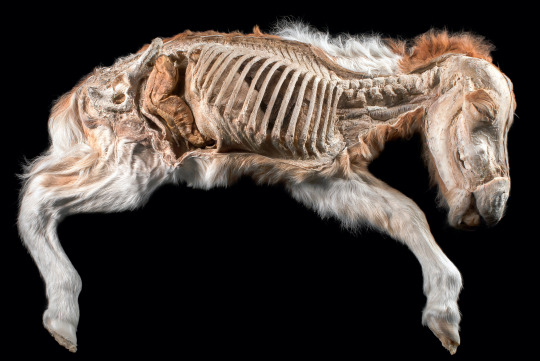
Minihorse foal. Equus ferus caballus. Technique of dehydration - piece showing the syntopy of organs on display at the Museum of Veterinary Anatomy FMVZ USP.
230 notes
·
View notes
Text
what the globblesnort is this

#ponyboy Curtis#the outsiders#this isn't ponyboy this is equus caballus lad#and bully this all u want I made sure to include this is ai#😈😈😈
7 notes
·
View notes
Text

Black & White, Pony (Equus Ferus Caballus)
By DM PHOTOGRAPHY
#dm photography#photographer#flickr#horse#black & white photography#equus ferus caballus#animal#mammal#nature
36 notes
·
View notes
Note
🥚

Kiger Mustang!
(Equus ferus caballus)
33 notes
·
View notes
Text

some semi-wild horses
near Kotel town, Bulgaria
6 notes
·
View notes
Text
Likewise, the Sakha (Yakut) people always donate one mare from their large herds of domesticated Horses to a shaman.
"Biological Exuberance: Animal Homosexuality and Natural Diversity" - Bruce Bagemihl
#book quote#biological exuberance#bruce bagemihl#nonfiction#sakha#yakut#donation#mare#horse#equus ferus caballus#shaman
2 notes
·
View notes
Video
Stampede- Wild horses by Georgie Alexon Via Flickr: This group of wild horses came running across the road towards us and another herd of wild horses. It was a beautiful sight to see in the wild. Taken in the foothills of the Rocky Mountains, Alberta, Canada -Equus caballus
#TWOP#Equus caballus#Equidae#wild horses#horse#wildlife#rocky mountains#outdoor#Alberta#Canada#Canon#animals#Photography#summer#flickr
34 notes
·
View notes
Text
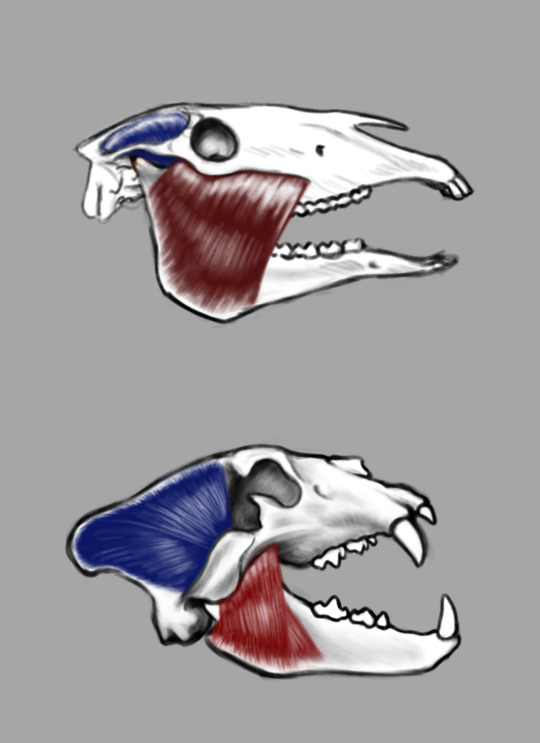

Skulls for a poster 🦴🦴🦴 (horse, lion, and human ofc)
#art#sketch#digital art#digital sketch#illustration#scientific illustration#skulls#anatomy#horse#horse skull#equus caballus#lion#panthera leo#human skull#homo sapien#strigoium’s college art
2 notes
·
View notes
Video
Ha, ha, you're not going anywhere! Idiot!
Spent the day at UF’s large animal hospital and got to see this :) This is a Thoroughbred named Sling going 37 miles an hour. Unfortunately, I caught this at the end as he was coming down from the speed. I love my school!
#video#horse#Equus ferus caballus#Equus ferus#Equus#equine#Equinae#equid#Equidae#perissodactyl#Perissodactyla#ungulate#Euungulata#Laurasiatheria#Boreoeutheria#mammal#Mammalia
25K notes
·
View notes
Text
Silent Feast
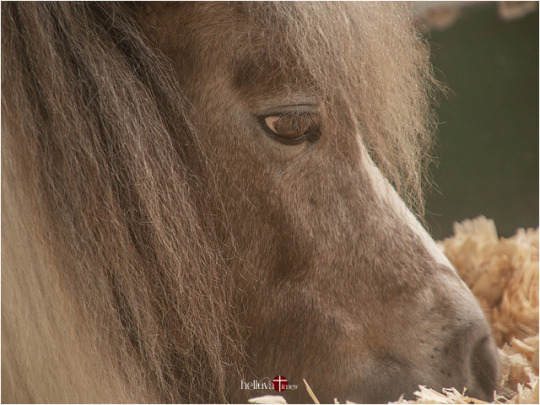
A pony eating quietly and pondering over its future in the local zoo. Photo credit: Eleanor Chua.
The camera was held level with the face of the pony for this shot. Hopefully, this would draw the viewer into the subject’s world.
#photographers on tumblr#animal pics#canon eos-m5#canon photography#Equus ferus caballus#flora fauna#photography tips#pony photos#tamron 16-300mm#wildlife photography
1 note
·
View note
Note
telling an interesting? personal story to see what i could get
so when I was younger my mom had a blueberry and raspberry bush in the backyards. They weren’t really ‘bushes’ but more of just scraggly plants that occasionally produced fruit. For some reason, we always had these sponges in their pots, a red sponge in the raspberry pot and a yellow one in the blueberry pot. I asked my mom about it recently and she doesn’t remember them at all. But anyways, when I was younger I really liked the fruits they produced. But one time the blueberry bush didn’t have any fully ripe blueberries so i just picked off a few green ones and ate them. Time goes on and i continue to eat the green ones, eventually more so than the actually fresh ones.
flash forward to now where I find out that green blueberries contain certain chemicals that are actually pretty poisonous. So younger me just built up an immunity to them all to eat sour crunchy berries. Good times
String identified: tg a ttg? a t t at c gt a g a a a a t aca. T ’t a ‘’ t t cagg at tat ccaa c t. a, aa a t g t t, a g t a t a a t t. a at t ct a ’t t at a. t aa, a g a t t t c. t t t ’t a a t c a g a at t. T g a ct t at t g , ta ta t acta . a a t t tat g cta cta cca tat a acta tt . g t t a t t t a t at cc . G t
Closest match: Equus caballus genome assembly, chromosome: 14 Common name: Horse

(image source)
1K notes
·
View notes
